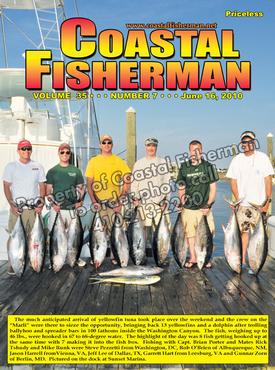


Article by Pat Schrawder
 IS IT REALLY A SONAR ?
IS IT REALLY A SONAR ?
Very often we get a call from someone who wants a quote on a SONAR for their boat. Upon further questioning we determine that the boat they are talking about is much too small for an actual SONAR unit and that really isn’t what they are looking for anyway.
The term SONAR is an acronym for Sound Navigation and Ranging. It is a navigational technique which uses sound to gather information about the surrounding environment. There are two types of SONAR: active and passive, and they are both widely used, depending on the situation.
Passive SONAR involves listening for sounds, such as noises generated by passing ships and submarines. This is the characteristic “pig” that you hear in old war movies.
Active SONAR emits a pulse from a transducer along the hull of the ship. The electrical impulse from the ship is translated into sound by the transducer, which typically reverts to passive mode to listen for the return echo of the sound. Actually, that is how every fish finder operates. But the term SONAR is normally reserved for a special kind of fish finder.
A regular fish finder uses a fixed mount transducer but true SONAR uses a hoist operated transducer element that is housed in a sound dome that can be lowered under the keel and rotated 360 degrees, giving you a picture of fish and bottom that is under the boat but also forward, port, starboard or aft of the vessel and outward for several hundred feet.
Mounting this special transducer system requires much more space than the normal transducer. It is typically mounted directly through the keel and must be able to be lowered enough to have a clear view all the way around and under the boat. Obviously, this takes a boat of a somewhat larger size. However, the advantages of true searchlight SONAR are many.
There is at least one manufacturer that has tried to come up with a balance between the two and that is Interphase. They make some fish finders that used fixed mount transducers but with a different design. The housing contains several elements facing in different directions. These elements are fired in rapid succession giving the impression of a transducer that is “sweeping”. They make several models from ones that sweep from side to side and those that sweep in an arc across the bow.
To quote Interphase, “Looking Forward Is Better Than Just Looking Down”.
Who can argue? Being able to see the underwater area ahead of your boat has many benefits. You are able to:
•Avoid pinnacles, rock outcropping and coral heads
•Find and follow shallow water channels and ledges
•Quickly find bottom structure and wrecks
•Watch for submerged containers and whales ahead
•Find safe passages through reefs
•Avoid running aground in shallow water
•Spot fish before they spot you
The company has won awards for innovation in fish finding and is probably worth your review.
Pat and her husband, Larry are owners of L&L Marine Electronics in West Ocean City, MD.